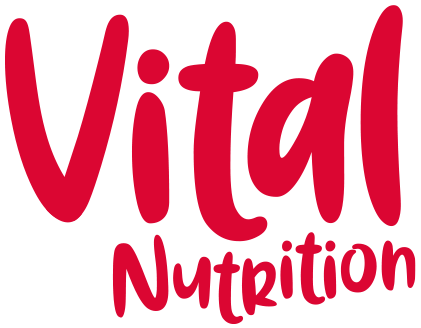Are you protein powered!
You can’t have missed the trend for high protein foods. Breakfast cereals, protein bars, yoghurts and even chocolate bars fortified with protein line the supermarket shelves. No longer just the preserve of body builders, protein supplements and protein fortified foods have gone mainstream.
You can start your day with a protein granola topped with protein yoghurt, have a protein bar with your mid-morning coffee and maybe choose a protein powered soup for lunch.
Protein is, of course an essential nutrient. Made up of amino acids, the building blocks of life that are required for structure and function within the body.
There are twenty amino acids, nine of which are essential amino acids. High quality protein contains all nine essential amino acids and meat is the easiest way to get this complete protein into your diet, but there are plenty of plant-based sources too. High protein foods include eggs, meat, fish, pulses, nuts, seeds, yoghurt and some cheese - especially cottage cheese.
Getting more protein into your diet is a great idea for most of us, especially if you want to lose weight without losing muscle, but relying on these off-the-shelf high protein foods could mean you are packing your diet with sugar, sweeteners, emulsifiers and a whole lot of ultra processed foods.
Why is protein hot news?
Diet trends are always driven by a quest for health and wellness, and usually weight loss is the central focus of this. Low fat foods are so last season, high protein is where it’s at these days.
Apart from being an important macronutrient, a high protein diet is associated with overall health, weight management, energy and even immune health.
Here is why adding a little extra to your protein is a good idea:
You’re likely to feel fuller for longer
It may help to reduce cravings for sweet or junk foods
To help improve body composition
For muscle gain and strength
For hormone balance
To support your immune system
To balance neurotransmitters
For energy and mood
How much is enough?
How much protein you need depends on your age, body weight and your health goals. As we get older, we are at increased risk of sarcopenia, or muscle wastage, so adding more protein to your diet can help to minimise this risk.
As a general rule, it is recommended that we get around 1g of protein per kg of body weight. Although opinions vary a little on this. The more active you are, the higher your needs.
For an active person, or someone who wants to lose body fat and preserve muscle, somewhere between 1-1.5g per kg of body weight is recommended, and for athletes the intake should be around 1.5-2g per kg body weight.
Adding extra protein is often where I start when I work with clients, as most of us fall short of these recommended intakes.
How to increase your protein
Use an app
An app like myfitnesspal is a good way to get an idea of your baseline. Before you make any changes to your diet, keeping a food diary will help you to see how much protein you get in a day and break it down into how much you are eating at each meal. Once you know this, you can start to work out if you are getting enough, or if you could do with a little extra.
2. Think protein first.
Whether it is breakfast, lunch or dinner, get into the habit of prioritising protein. Aim for about a palm-sized portion and choose from eggs, meat, fish, chicken, nuts and seeds, pulses, natural yoghurt, cottage cheese or feta.
3. Notice how you feel.
With any dietary changes, its about getting the right fit for you. When you start increasing your protein intake, you might start to notice changes to your appetite, mood, energy and even sleep. After a while, your body shape or weight might change.
How to eat more protein
Getting more protein into your diet without choosing processed foods does not have to be difficult.
Here are some ideas to get you started:
For breakfast – natural yoghurt with a low sugar granola, a spoonful of chia or flaxseed and some berries or an omelette with 2-3 eggs, some feta cheese, spinach and mushrooms would be a good start to your day
At lunchtime – make yourself up a seasonal salad packed with loads of veg – grated carrot, shredded kale, beetroot, chopped apple, a handful of walnuts and serve with a chicken breast, some halloumi or tinned fish. Drop the bread and swich to oatcakes if you want extra carbohydrate with this (you’re getting some from beetroot and carrot, so not necessary unless you are extra hungry!)
At dinner – think protein first – a portion of chicken, fish, meat or pulses about the size of the palm of your hand, with half a plate of your favourite vegetables and a little low GI carbohydrate like brown rice, wholemeal pasta, sweet potato or other root vegetables. Make that portion about the size of your fist. This could be a curry, stew, chilli, spaghetti Bolognese or meat and two veg. Just tweaking things slightly to get the balance right.
Upping your protein will probably mean that you feel fuller and don’t need to snack between meals. This is a good thing, although if you find yourself peckish, then make sure your snacks add something to your diet. A handful of nuts, some carrot sticks with houmous, an apple with peanut butter or berries and yoghurt will give you extra nutrition and a whole lot less sugar than grabbing a biscuits or bar.
Can you eat too much protein?
Of course there is always an exception to the rule, but it is almost impossible to eat too much protein, The exception to the rule is for people with kidney damage, where a high protein diet is contraindicated. If your kidneys are healthy, protein is harmless.

